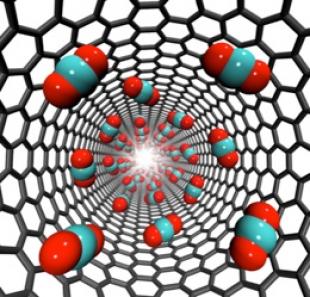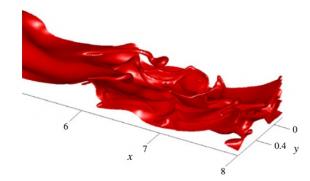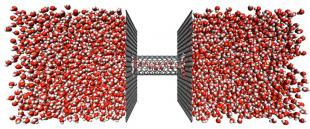MULTI-SCALE flows are ubiquitous in industry and nature, including biological systems, chemical processes, common fluid dynamics processes, material properties, nano- and micro-fluidic devices, batteries, fuel cells, and genetic analysis. What is common in all these flow problems is that there are different physical processes occurring over various time and length scales.
While conventional fluid dynamics is generally inaccurate in modelling these complex fluidic problems, higher-resolution methods (e.g. molecular) are often too computationally expensive to cover the entire range of multiscale processes. The research challenge is to develop innovative and efficient methods that capture all the different ranges of scales.
MULTIPHASE flow problems are a complex class of multi-scale problems that involve flows with two or more phases. These types of flows are again abundant in industry (such as oil/gas, nuclear, chemical processes, carbon-capture and phase-change cooling) and in nature (including surfactant transport in pulmonary flows, haemodynamics in retinal capillaries and haemodynamic vessel/tissue interaction in brain).
Multiphase flows are inherently multiscale, where the physics of the problem is not only driven by the scale of the mean flow, but also by the scale of the fluid dynamics at the interface (such as the gas-liquid interface or a gas-liquid-solid contact line) that can be smaller by orders of magnitude. The interaction between these scales can lead to different flow regimes, such as stratified-slug flow transition and entrainment of droplets from the denser liquid phase into the lighter fluid phase, phase changes and flow instabilities.
This research group develops and utilises numerical, analytical and experimental tools to solve particle flow and flow behaviour problems in a range of materials and media, from particle transport in biological soft matter to the chemical behaviour of atoms and molecules.
Research in this area includes:
- Designs for aligned-nanotube membranes for water purification and gas separation (e.g. Professor Jason Reese and Dr Matthew Borg)
- Insight into water interactions with moving surfaces, applicable to drag reduction coatings (e.g. Professor Jason Reese and Dr Matthew Borg)
- Applications of molecular algorithms in materials simulation (e.g. Professor Ben Leimkuhler)
- Partial thermostatting of coarse grained molecular dynamics (e.g. Professor Ben Leimkuhler)
- Particle sorting and separation in microfluidic devices for disease diagnosis (e.g. Dr Timm Krüger)
- Particles at liquid-liquid interfaces for materials design (e.g. Dr Timm Krüger)
- The development of numerical (CFD/DNS) and analytical (stability theory) tools for multi-phase fluid dynamics such as in oil-gas-solid pipeline flows, or industrial cleaning and fouling (e.g. Dr Prashant Valluri)
- The incorporation of hydrodynamic interactions into molecular dynamics calculations (e.g. Professor Davide Marenduzzo)
- Experimental investigations of two-phase flows in micro-scale (e.g. Professor Khellil Sefiane)
- Boiling in microchannels: integrated design of closed-loop cooling systems for devices operating at high heat fluxes (e.g. Professor Khellil Sefiane, Dr Prashant Valluri and Dr John Christy)
- Customised numerical methods and 3D flow solvers which are compatible with supercomputing platforms such as ARCHER, for two-phase flows both with or without phase change (e.g. Dr Prashant Valluri)
People working on Multi-scale Multiphase Flows
Click here to see our people working in the area of Multi-scale Multiphase Flows.



